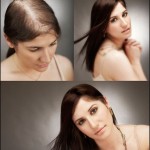Don’t opt for topical hair loss treatments, unless they come from reputed laboratories, backed by adequate research.
Hair loss is a major cause for concern both among men and women. There are several reasons that can cause it. However, people tend to try every thing in sight considering products promise the earth. People buy products blindly without checking on what the ingredients in the product are and what they can do.
A word of advice
Determine the true cause behind your hair loss. Each hair loss case is individual and has different causes; therefore there is never any single cure. A good diet, rich in protein and iron can reduce hair loss, if it’s being caused by the lack of these two essential nutrients. While light massages are definitely relaxing and beneficial, excessive massaging and manipulation of the scalp can be counterproductive and lead to more loss of hair.
Meditation and yoga can also help in reducing stress levels, which cause hair loss. Of course, keeping your hair clean and healthy is also important. Tackle dandruff with a medicated shampoo and get a blood test done to rule out any hormonal imbalances.
When there is a nutritional deficiency in the body, the hair is the first to be deprived of nutrients, which are rationed out to other vital organs. Therefore, your hair will be the first to show signs of malnutrition and ill health. Like your skin, your hair is an indicator of your body’s health.
Other golden rules include not overdoing the hair drying and heat setting, avoiding excessive perming and coloring, not tying hair too tightly and of course, getting regular trims.
As for topically applied hair loss treatments, unless they come from reputed laboratories, with the backing of research, don’t waste your money. After all, it’s your precious hair we’re talking about here.
The latest in hair science are scalp analyzers and a hair probe. A scalp analyzer is a minute camera that runs over your scalp and analyses your hair growth pattern, density and scalp infection if any.
This image is magnified 100 times over so that a trichologist can analyze the exact treatment required for your hair.
The hair probe is a minute calliperised probe that measures the diameter and the protein content of your hair to help analyze your hair.
Here we look at some of the products (and the ingredients they contain) available in the market, which claim to arrest hair loss and to grow new hair.
Retin-A / Tretinoin
This derivative of vitamin A, originally became popular as acne medication. But latest research conducted in the US shows that Retin-A by itself or in combination with minoxidil can result in moderate to good hair growth in individuals with androgenetic alopecia (male pattern baldness) and alopecia areata (sudden bald spots).
Azelaic acid
Azelaic acid like Retin-A is also used in the treatment of acne and other skin disorders. Recent studies find that azelaic acid can play a positive role in the treatment of male pattern baldness.
Minoxidil
Topical Minoxidil is the most widely recommended treatment for androgenetic alopecia by dermatologists. Minoxidil has to be applied continuously in order to see any positive results and is most effective with people who have just started losing hair, not in cases where the hair loss is extensive. The hair regrowth is fine and the product must be used indefinitely to maintain the newly grown hair.
In the United States, topical minoxidil is marketed under the brand name Rogaine, and in New Zealand, the UK and Europe it is marketed as Regaine and recently a generic version of topical Minoxidil has become available under the brand name Headway.
Propecia (finasteride) (Only for male pattern baldness)
Propecia is a relatively new drug from Merck available in the US. It is a tablet, which is taken once a day and is currently only approved for use by men. Propecia is not to be used by woman and children. Propecia is a four aza-steroid compound that is a specific inhibitor of type 2 5 alpha reductase, which is the enzyme that metabolises the androgen testosterone into dihydrotestosterone (DHT).







